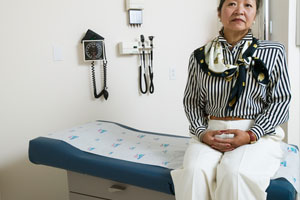RESEARCHERS have called for greater support for hospital in the home programs after finding they can cut the odds of death and hospital readmission and save money when compared with inhospital care.
A meta-analysis of 61 randomised controlled trials, published in the latest MJA, showed the reduction in mortality, readmission rates and cost in hospital in the home (HITH) care compared with inhospital care was “statistically and clinically significant”. (1)
The study authors said similar reductions in mortality were found for all age groups and HITH increased patient and carer satisfaction. The only aspect they found to be unaffected was carer burden.
The authors said HITH had grown in popularity because of concerns about the safety, availability and cost of inhospital care. They also acknowledged concerns of inhospital clinicians that HITH care was lower quality and reduced access to life-saving technologies and resources.
However, the study authors said the results of their systematic review supported greater use of the HITH where appropriate.
“Our data support greater use of HITH to improve patient outcomes, as measured by mortality, readmission rates and patient and carer satisfaction. Where suitable care can be provided at home as an alternative to hospitalisation, we believe that it should be recommended”, they wrote.
An example of how far HITH can be extended was outlined in a Reflections article in the same issue of the MJA. Doctors described the case of a terminally ill intensive care patient who was taken home intubated and ventilated. After spending some time with loved ones, the patient died in her home when ICU support was withdrawn. (2)
Medical and nursing staff from the intensive care unit at Cabrini Hospital, Melbourne, took the intensive care technology and expertise to the home of the patient, who had end-stage progressive motor neurone disease and had communicated her preference to die at home.
The staff described the case as challenging and logistically difficult. However, they said it was a “humbling and unique experience for everyone, and the people present expressed their gratitude to our team for her care”.
“Our positive therapeutic relationship and the ability to achieve home palliation may both have contributed to the quality of death for this patient”, the authors wrote.
They calculated the cost of the home-based care as $1466, half the cost of a day in the ICU.
An accompanying editorial said HITH offered a clinical and financial structure for delivering innovative care. (3)
The editorial authors said the principles of applying the care described in the case report were “very similar to the principles of applying care in other situations in which HITH is regularly involved”.
Dr Nick Collins, director of ambulatory care at Campbelltown and Camden hospitals in Sydney, which offers a HITH service, told MJA InSight that HITH had the potential to offer safer care across certain domains and produce cost efficiencies for the health system.
Dr Collins said although HITH had become a significant contributor in the health landscape, those working within the system currently lacked the resources to articulate the benefits of HITH in influential professional, scientific and political circles.
For HITH services to expand, they would need to include community practitioners such as GPs, community and practice nurses, pharmacists and allied health workers, who may be better placed to deliver care, especially in the context of chronic disease, within their local population, Dr Collins said.
“Perhaps this may lead to a more integrated model of care between state and federal systems. There are barriers here that challenge the patient-centeredness of the HITH concept”, he said.
– Amanda Bryan
1. MJA 2012; 197: 512-519
2. MJA 2012; 197: 524-525
3. MJA 2012; 197: 479-480
Posted 5 November 2012

 more_vert
more_vert